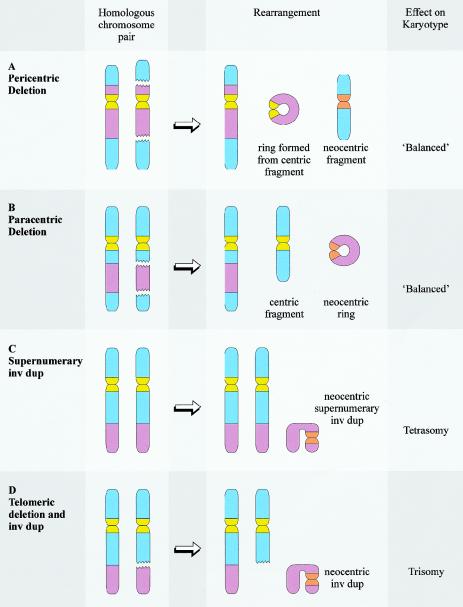Figure 3.
Chromosome rearrangements commonly associated with neocentromere formation. Neocentromere formation is typically associated with a chromosome rearrangement resulting in the generation of a fragment that lacks a conventional centromere. The most common chromosome rearrangements are interstitial deletions (A and B) and inverted duplications (C and D). Interstitial deletions are typically associated with the formation of a ring chromosome, which may be necessary to stabilize the broken chromosome ends. The ring chromosome may be derived from the centric deletion chromosome (in the case of pericentric deletions, shown in A) or from the neocentric fragment (in the case of paracentric deletions, shown in B). When neocentromere formation results from an interstitial deletion, the resulting karyotype is usually “balanced” at a cytogenetic level. However, phenotypic effect may result from a “ring syndrome,” leading to mosaicism for one of the fragments, or from interruption of critical genes at the sites of chromosome breakage or neocentromere formation. Inverted duplications can be supernumerary to the original karyotype (C) (resulting in tetrasomy for the duplicated segment) or accompanied by a complementary deletion (D) (resulting in trisomy for the duplicated segment).

